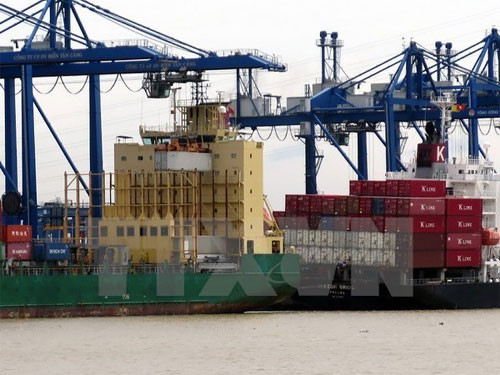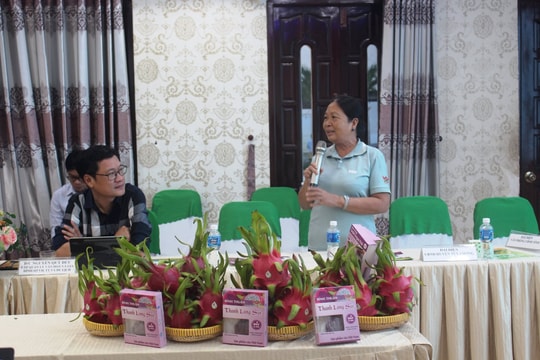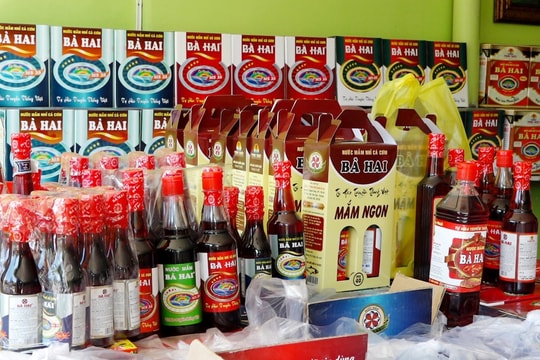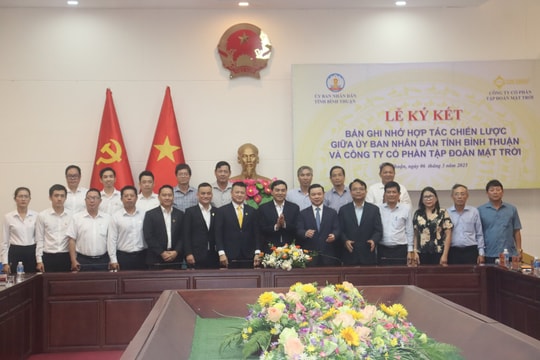 |
Agricultural and seafood exports were expected to reach 27.5 billion USD,
representing a 5.4 percent year-on-year increase; material and minerals 5.1
billion USD, up 6 percent; and processing 196.1 billion USD, up 12.5 percent.
Speaking at the press meeting held in Hanoi on October 17, Hai said Vietnam’s
exports had surpassed its set targets so far this year.
By the end of September, 26 products had achieved export turnover of more than 1
billion USD. Of these, eight items had export turnover of over 5 billion USD and
another five posted 10 billion USD export turnover in the first nine months of
the year.
For example, exports of mobile phones and spare parts reached 36.13 billion USD,
garments and textiles 22.56 billion USD and computer and electronic spare parts
21.65 billion USD.
Notably, exports of domestic companies continued to see a high growth rate. In
the January-September period, the local firms earned 51 billion USD from
exports, posting a 17 percent year-on-year rise.
“The exports in the period showed the positive growth results of domestic
enterprises,” he added.
12 loss-making projects handled in 2020
Duong Duy Hung, head of the ministry’s Planning Department, said the country
aimed to basically resolve difficulties for the 12 loss-making projects and
would completely handle them by 2020.
Hung said the handling of all of the projects saw positive signs after the
National Assembly promulgated the Resolution 33 in November 2016 and the Prime
Minister’s Decision in September 2017 to resolve the projects’ difficulties.
Accordingly, DAP1 Dinh Vu in Hai Phong city and the Vietnam-China Steel Plant
reported profits of 147.6 billion VND and 527.4 billion VND respectively in the
first eight months of the year.
Another four projects which have resumed their operation but still reported
losses had plans to reduce costs and re-arrange production.
Some production lines of PVTEX Dinh Vu came into operation in April. It would
operate all production lines in the upcoming time.
He said the two bio-fuel plants of Dung Quat and Binh Duong, and Phuong Nam
Paper Plant have also been ready to restart their operations.
Regarding existing problems, he said there were eight projects facing the
disputes in EPC contracts but having been slow to be solved.
5.5 trillion VND used to curb retail prices
Deputy Minister Hai said the ministries of Industry and Trade and Finance used
5.5 trillion VND from the price stabilisation fund as subsidies to keep retail
prices stable.
In the latest price adjustment, petrol prices were increased by 700 VND per
litre following the surge in the world market.
“With the hike in the world market, the retail petroleum price would be
increased by over 1,000 VND per litre. However, it was increased by 700 VND per
litre thanks to the price stabilisation fund,” he said, adding that this was
benefit brought by the fund.
As of September 25th, the fund balance was 3.1 trillion VND. He said that the
operation of the fund has been effective in regulating petroleum prices,
contributing to control prices of commodities, thereby helping stabilise the
market and controlling inflation.
He noted that the retail petrol prices in the upcoming time would depend on the
world price and the balance of the price stabilisation fund.
Source: VNA

















.jpg)




.jpeg)

.jpeg)


.jpeg)





